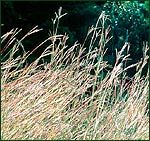
U of Wisconsin-Madison |
Big Blue Stem, "Turkeyfoot"
- Warm season native
- Northern varieties
3-5' tall, southern varieties 5-8' tall
- Deep root systems
from 8-15 feet
- Helps keep weeds
and pocket gophers out with a thick fibrous
root system that also does not provide a food
source.
- Provides excellent
nesting cover as a bunch grass
- Provides marginal
winter cover since it tends to fall
- Seeds are eaten
by birds and is considered a "secondary"
food source, vegetatative part of plant is browsed
on by whitetail deer
- Valuable warm
season grass for reseeding cultivated lands
to native grass mixes. This plant is relatively
easy to establish and provides a good mix with
cool season grasses for native seedings.
|
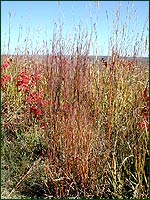
Mike Haddock - KSU |
Little Blue Stem
- Warm season native
- Northern and southern
varieties 2.5-3' tall
- Deep root systems
from 8-15 feet
- Helps keep weeds
and pocket gophers out with a thick fibrous
root system that also does not provide a food
source.
- Provides excellent
nesting cover as a bunch grass
- Provides marginal
winter habitat due to short height, tends to
fall
- Good source of
seeds for songbirds, forage value for deer is
good early but only fair as the plant matures
- Valuable
warm season grass for reseeding cultivated lands
to native grass mixes. This plant is relatively
easy to establish and provides a good mix with
cool season grasses for native seedings.
|
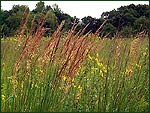
U of Wisconsin-Madison |
Indian Grass
- Warm season native
- Northern varieties
3-5' tall, southern varieties 5-8' tall
- Deep root systems
from 8-15 feet
- Helps keep weeds
and pocket gophers out with a thick fibrous
root system that also does not provide a food
source.
- Provides excellent
nesting cover as a bunch grass
- Marginal winter
cover since it tends to fall
- Seeds are used
sparingly by prairie chickens and turkeys, forage
value for whitetail deer is good early on but
fair as the plant matures
- Valuable warm
season grass for reseeding cultivated lands
to native grass mixes. This plant is relatively
easy to establish and provides a good mix with
cool season grasses for native seedings.
|
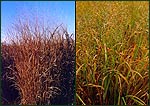 |
Switchgrass
- Warm season native
- Northern varieties
3-5' tall, southern varieties 5-8' tall
- Deep root systems
from 8-15'
- Helps keep weeds
and pocket gophers out with a thick fibrous
root system that also does not provide a food
source.
- Nesting cover
is marginal in pure stands as it is often too
thick
- Excellent winter
cover if planted in higher rates or pure stands
- Fair to good forage
value for whitetail deer.
- Since switchgrass
is related to the corn and sorghum family, the
smaller seeds are highly desired by wildlife.
The seeds are used more by songbirds and upland
gamebirds.
- Valuable warm
season grass for reseeding cultivated lands
to native grass mixes. This plant is relatively
easy to establish and provides a good mix with
cool season grasses for native seedings.
|
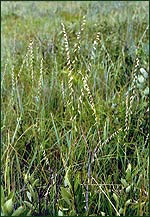
Mike Haddock - KSU |
Sideoats Grama
- Warm season native
- Northern and southern
varieties 2.5-3' tall
- Helps keep weeds
and pocket gophers out with a thick fibrous
root system that also does not provide a food
source.
- Excellent nesting
cover as a bunchgrass
- Marginal winter
cover due to low height
- Good grazable
forage for whitetail deer, Seeds utilized by
songbirds and upland game birds
- Valuable warm
season grass for reseeding cultivated lands
to native grass mixes. This plant is relatively
easy to establish and provides a good mix with
cool season grasses for native seedings.
|
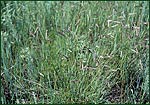
NPWRC |
Blue Grama
- Warm season native
- Northern and southern
varieties 1.5-2' tall
- Helps keep weeds
and pocket gophers out with a thick fibrous
root system that also does not provide a food
source.
- Excellent nesting
cover as a bunchgrass
- Marginal winter
cover due to low height
- Very valuable
plant for wildlife, both as a source of seeds
birds and forage for grazers. Wild turkeys,
pheasants, and songbirds utilize the seeds;
while antelope, deer, and elk graze the vegetative
plant parts.
|
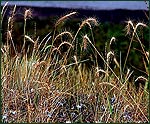
Matt Lavin |
Canada Wildrye
- Cool season native
- Northern varieties
2.5-3.5' tall, southern varieties 3-5' tall
- Marginal winter
cover, as it tends to fall
- Fair forage for
grazing and browsing wildlife species; seeds
may be utilized by some songbirds
- Valuable cool
season grass for reseeding cultivated lands
to native
grass mixes. This plant is relatively easy to
establish and provides a good mix with warm
season grasses for native seedings.
|
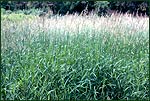 |
Reed Canarygrass
- Cool season introduced
- 3-6' tall
- Dense strands
provide excellent nesting habitat for waterfowl
and some shorebirds.
- Very poor winter
cover as it falls
- Good to excellent
forage for whitetail deer.
- Best known for
its wildlife values through seed production,
with its seeds being used by many songbirds
and pheasants.
- Can be over-aggressive
and crowd out other more desirable plants.
|
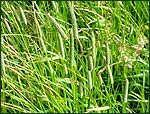 |
Timothy Grass
- Cool season introduced
- Avg. 3' tall
- Provides little
wildlife value
- Foliage is very
palatable for deer and elk
- Seeds used by
some songbirds
- Used as cover
crop in tree plantings
|
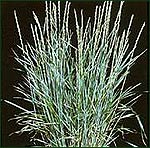 |
Slender Wheatgrass
- Cool season native
- Avg. 3' tall
- Nesting cover
is marginal in thick stands
- Winter cover can
be good in solid stands
- Provides good
to excellent forage for antelope, whitetail
deer, and mule deer.
- Seeds are utilized
by many songbirds and sharp-tailed grouse
|
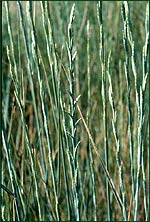 |
Tall Wheatgrass
- Cool season introduced
- 3-7' tall
- Best used by wildlife
as nesting cover for upland gamebirds and waterfowl
due to the tall cover provided. Also provides
protective habitat for many small and large
mammals.
- Provides fair
forage value for hoofed mammals when immature
but provides little to no feed value when mature.
- Seeds are
used to a small extent by sharp-tailed grouse,
pheasants, and some songbirds.
|
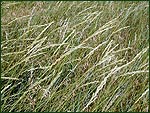 |
Western Wheatgrass
- Cool season native
- 1-3' tall
- Helps keep weeds
and pocket gophers out with a thick fibrous
root system that also does not provide a food
source.
- Nesting cover
is marginal in thick stands
- Winter cover can
be good in solid stands
- Suitable forage
plant for elk, antelope and deer
- Sharp-tailed grouse,
pheasant, and several species of songbirds will
use the seeds as food.
|
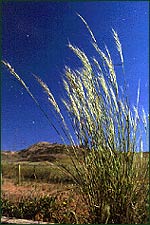 |
Green Needlegrass
- Cool season native
- 2-3' tall
- Helps keep weeds
and pocket gophers out with a thick fibrous
root system that also does not provide food.
- A bunchgrass,
marginal nesting and winter cover
- A very palatable
grass for many large and small mammals. The
vegetative parts are consumed by deer and elk
when the plant is not in the fruiting stage.
|
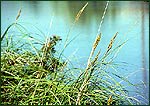 |
Prairie Cordgrass
- Warm season native
- 3-7' tall
- Does provide nesting
habitat and cover for mammals and birds.
- Marginal winter
cover
- Seeds are utilized
by marshbirds, sparrows, and sharp-tailed grouse.
- Muskrats depend
on this plant for a small part of their diet
- Leaves are very
sharp, nicknamed "cut grass", can
be very hard on livestock
|